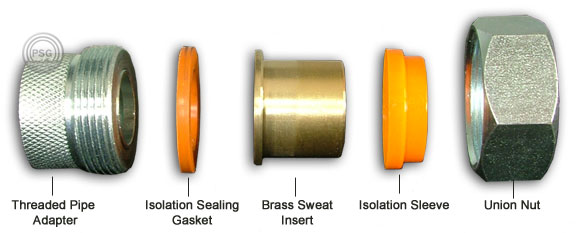gadfly56
Senior Member
- Location
- New Jersey
- Occupation
- Professional Engineer, Fire & Life Safety
If you're screwing directly to the stub on top of the tank, you're not making a dielectric connection, regardless of the stub being plastic lined. Typical dielectric unions, from what I've found, have a plastic liner that keeps the copper pipe from being in contact with the nut on the union and a o-ring keeping it from contacting the lower lip, breaking the electrical path. If it didn't, it would be much use as a dielectric union, would it?He was talking about a nipple you were talking about a union. There is a difference in continuity of the outer portion there. Nipple is metallic, not sure what kind of metal but apparently something that won't have galvanic corrosion between it and the steel hub on the tank nor to a copper fitting on the outgoing line, but shouldn't interrupt electrical continuity either.

